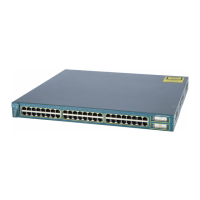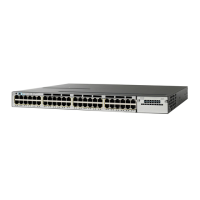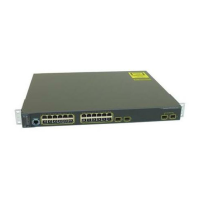PurposeCommand
Displays the sources that SSM mapping uses for a
particular group.
Device#show ip igmp ssm-mapping group-address
Displays the multicast groups with receivers that
are directly connected to the router and that were
learned through IGMP.
Device#show ip igmp groups [group-name |
group-address | interface-type interface-number] [detail]
Displays the default domain name, the style of
name lookup service, a list of name server hosts,
and the cached list of hostnames and addresses.
Device#show host
Displays the IGMP packets received and sent and
IGMP host-related events.
Device#debug ip igmp group-address
Configuration Examples for SSM and SSM Mapping
SSM with IGMPv3 Example
The following example shows how to configure a device (running IGMPv3) for SSM:
ip multicast-routing
!
interface GigabitEthernet3/1/0
ip address 172.21.200.203 255.255.255.0
description backbone interface
ip pim sparse-mode
!
interface GigabitEthernet3/2/0
ip address 131.108.1.2 255.255.255.0
ip pim sparse-mode
description ethernet connected to hosts
ip igmp version 3
!
ip pim ssm default
Related Topics
Configuring Source Specific Multicast, on page 267
SSM Components Overview, on page 261
SSM Filtering Example
The following example shows how to configure filtering on legacy RP routers running software releases that
do not support SSM routing. This filtering will suppress all unwanted PIM-SM and MSDP traffic in the SSM
range. Without this filtering, SSM will still operate, but there may be additional RPT traffic if legacy first hop
and last hop routers exist in the network.
ip access-list extended no-ssm-range
deny ip any 232.0.0.0 0.255.255.255 ! SSM range
IP Multicast Routing Configuration Guide, Cisco IOS XE Release 3.6E (Catalyst 3850 Switches)
280 OL-32598-01
Configuring SSM
Configuration Examples for SSM and SSM Mapping

